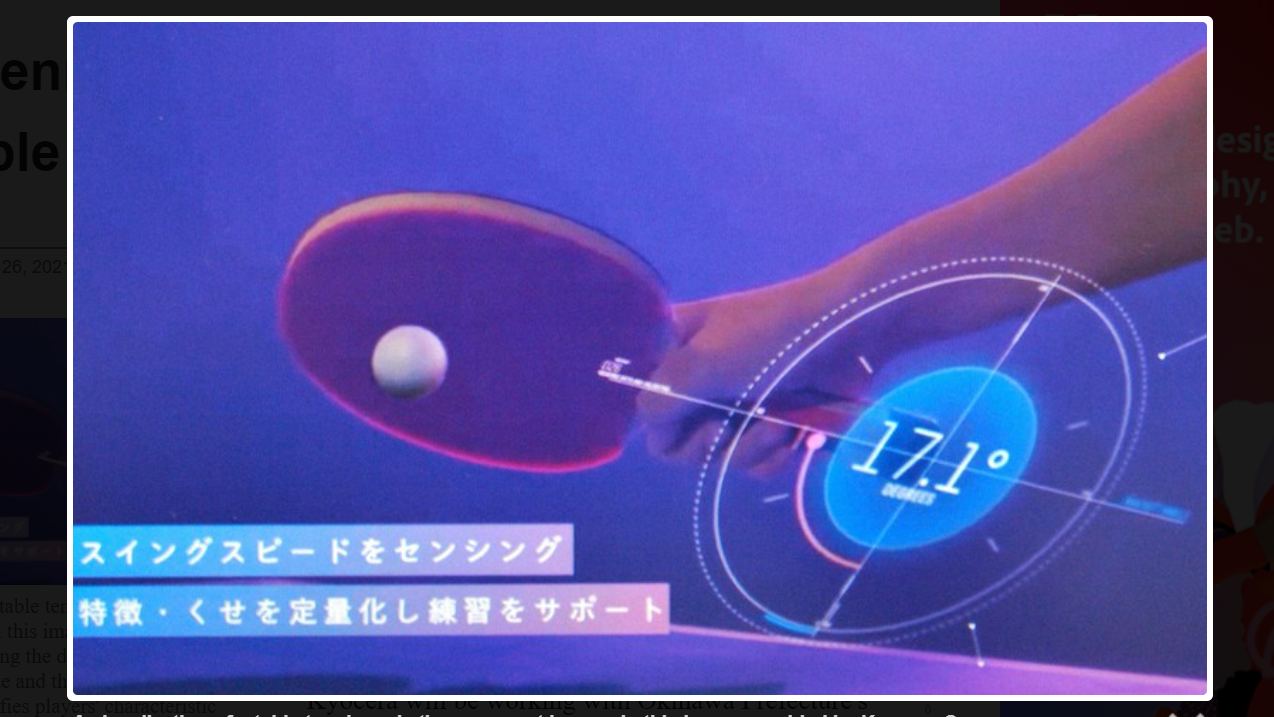Don't look now, but the future is here. Over the years, we have reported on advances in AI-driven table tennis robots from companies such as Japan's OMRON and Germany's KUKA. These robots employ visual sensors to analyze the mechanics of their human opponents and make lightning-quick adjustments to keep the rally going. Two weeks ago, we reported on a California teen, Kevin Ma, who invented his own AI program for racket sport analysis. Attaching homemade sensors to his tennis and table tennis rackets, Ma was able to learn hard truths about his swing from the straight-shooting virtual coach. Now, former cell phone giant Kyocera looks to reinvent itself in an iPhone-dominated world. Using a more advanced version of the Kevin Ma system, Kyocera has developed a lightweight "triple-axis crystal gyro sensor module" which fits unobtrusively on the end of the handle. With the data transmitted from the sensor to your smartphone (a Kyocera, of course), you can obtain fine-grained data on your racket angle, the arc of your swing and the timing of your stroke. Thus, your mechanics can be compared to professional players. While such comparisons are invariably unflattering, they can provide invaluable and inarguable feedback for coaching. Professional players are already making themselves useful, as three members of Japan's premier T-League have gamely agreed to test the devices. The brave volunteers from the Ryukyu Asteeda team will provide critical beta data for Kyocera, the final steps in refining the AI program preparatory to marketing and distribution. Giants of engineering continue to stand on each other's shoulders, their competitive motives unwittingly forming a worldwide collaboration toward the advancement of science. Now, as ever, the world is as technologically advanced as it has ever been. Ready or not, the future is still here.
More at The Mainichi
